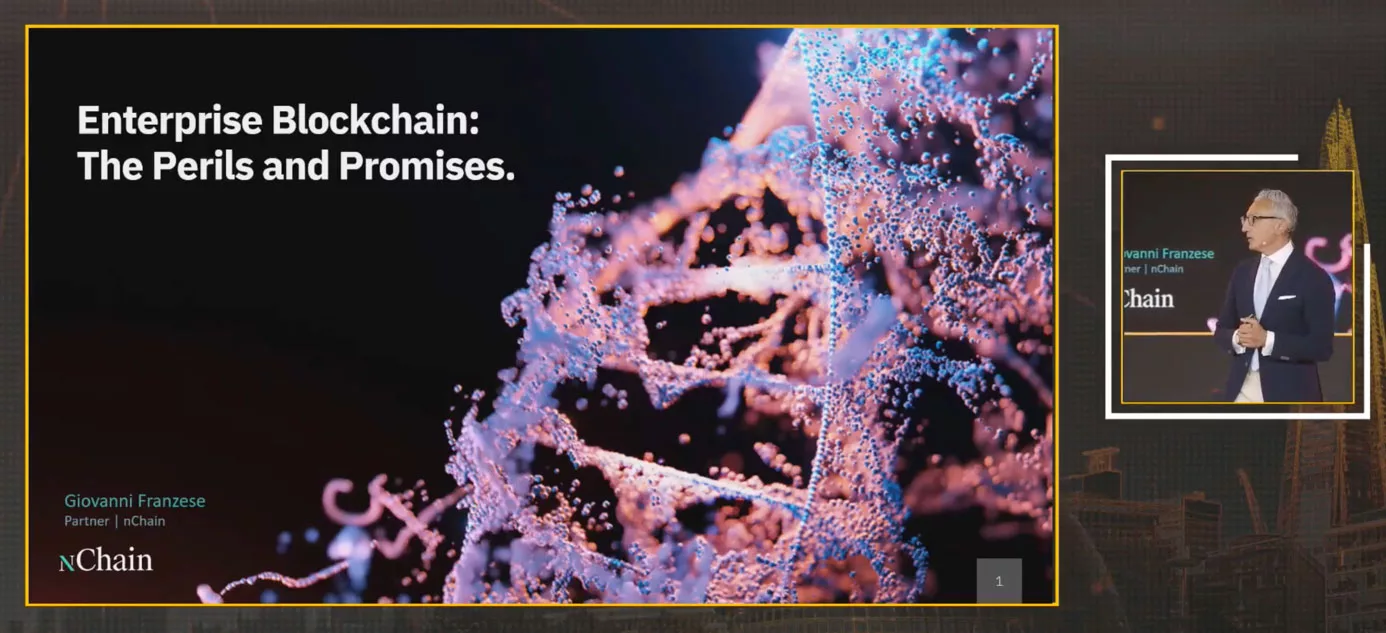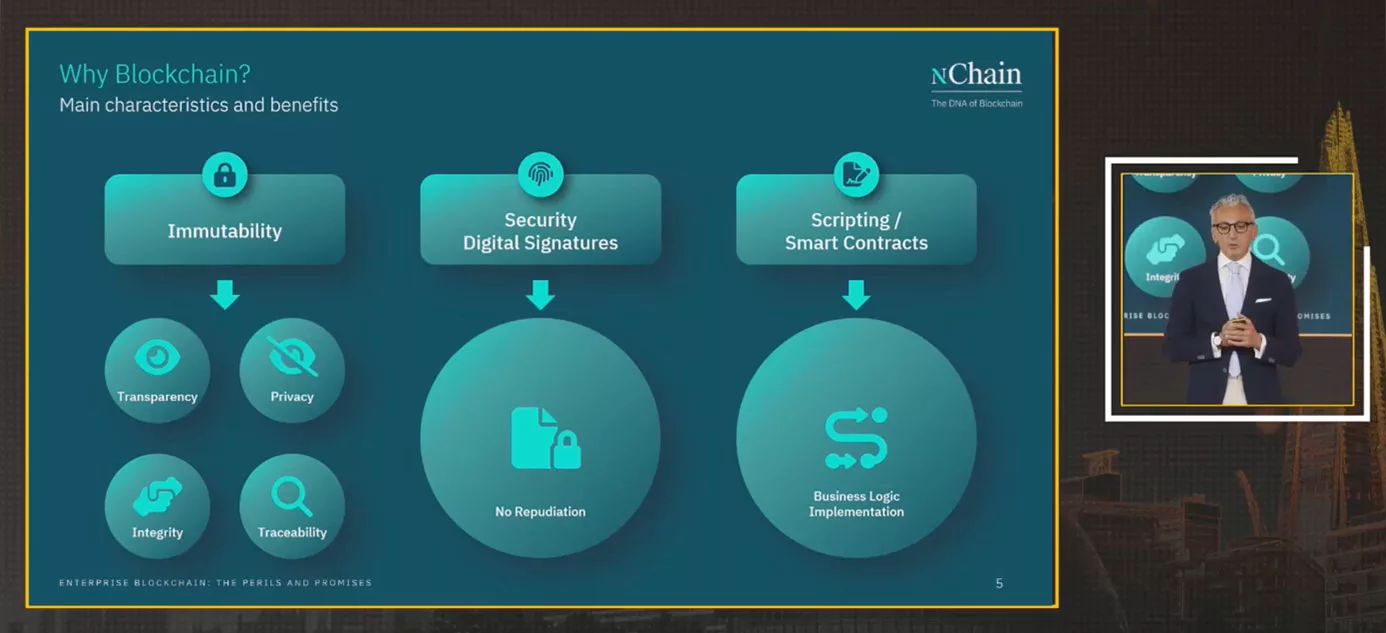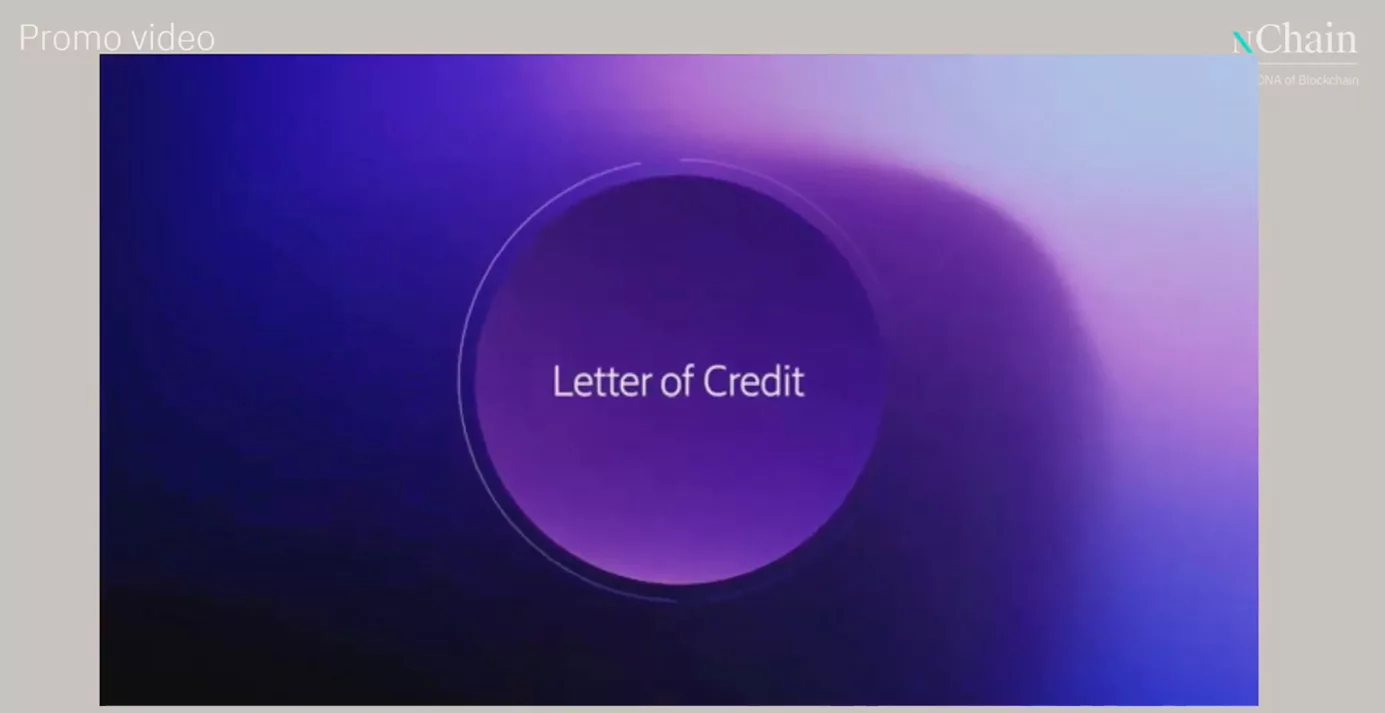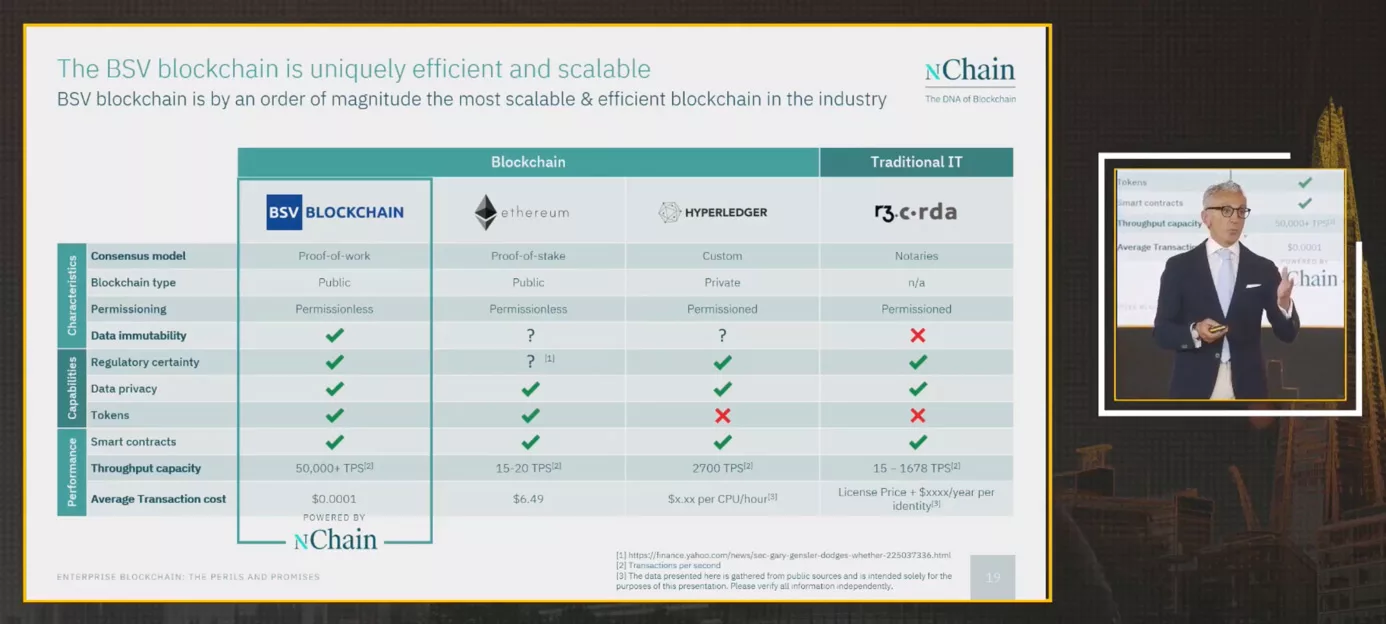Giovanni Franzese demonstrates Ericsson’s competitive advantage via blockchain at the London Blockchain Conference 2023
[gpt3]rewrite
At the London Blockchain Conference, nChain partner Giovanni Franzese presented the fusion of blockchain and enterprises.
Franzese has spent much of his career at networking and telecommunications company Ericsson (NASDAQ: ERIC). Today, he is focused on educating corporate communities about the unique features of the BSV blockchain.
“When I started promoting blockchain in Ericsson, like everyone else, I said transparency. And I remember they said: What? Transparency? We don’t want transparency! This is completely reasonable because in a corporate environment, for sensitive data like finance, “You don’t want transparency. You want privacy,” Franzese said.
However, Franzese rightly explained that there is no dichotomy between transparency and privacy to worry about when implementing the BSV blockchain.

The transition from data silos to distributed ledger in corporate environments
Franzese pointed out that companies have traditionally started building on so-called “private blockchains,” which — at the end of the day — are simply internal databases. With the latest developments on the BSV blockchain, Franzese raised the question of whether the corporate approach to “private blockchains” is still worth it.
While nChain is working on the BSV blockchain, Franzese highlighted that Bitcoin as a tool is a distributed database. It is the opposite of the “private blockchains” that companies have tried in recent years.
“In a client-server mode, for example, you have to host the backend, which is often the database – where the data resides. This is a main problem because in a business there is no trust between the parties. That’s business. We don’t need trust someone. If we have to trust someone where we’re going to put the data, knowing that someone can change and manipulate – then you understand that it’s a lack of trust that doesn’t make me feel very comfortable. Blockchain is disruptive because it’s a distributed architecture,” Franzese said.
Privacy and transparency concerns regarding blockchain
While Franzese takes seriously the concerns of businesses about “too much transparency” or “too little privacy” using blockchain, he used his presentation to explain that solutions for this are already available.
For example, in his keynote speech at the London Blockchain Conference, Bitcoin inventor Dr. Craig Wright proposes a method to encrypt every single file a user ever touches – not once, but every time the file is accessed. Furthermore, the BSV blockchain automatically becomes more private over time by processing higher volumes of transactions.
“This may sound controversial (…), but this is the beauty of blockchain. This duality of blockchain. You can have both – transparency and privacy; there are techniques. There are things you can do to keep all the properties to blockchain and still provide privacy, Franzese said.
Furthermore, Franzese explained that the built-in security features of the BSV blockchain are particularly enabling no rejectionwhich is not a technical but a legal term referring to digital signatures.

Two real use cases of blockchain implementation by Ericsson
Franzese used his stage time to show us how Ericsson has found ways to effectively address some of their data challenges with blockchain.
For example, Ericsson has a customer acceptance process where a blockchain application is used to enable automation in network service delivery (ECA). With this ECA, Ericsson has created a single source of truth and a single point of sign-offs, making it a smoother experience for the company, as well as for customers.
Franzese commented that this blockchain-powered ECA process had been a great success, and Ericsson offers this method to many customers globally.

Furthermore, Ericsson has built another blockchain-powered business process called Letter of Credit, where banks and customers are connected in a single, reliable digital flow.
Ericsson’s blockchain solution Letter of Credit is a promise from a bank on behalf of the customer to pay Ericsson a specified sum in an agreed currency. All parties involved have real-time access to identical information on the same platform.
Smart contracts and digital signatures secure Ericsson’s letter of credit while improving speed, simplicity and traceability. With this innovation, Ericsson appears to be at the forefront of how to use blockchain technology in an enterprise environment – leading to serious competitive advantages.

Franzese encourages companies to research the BSV blockchain
Thanks to Franzese, Ericsson is already reaping the benefits of easy-to-implement blockchain solutions. From what I can tell, Franzese seems passionate about how specifically the BSV blockchain will enable businesses to operate more securely and quickly in the digital age – at a very low cost.
“When I started six years ago, I used “private blockchain” platforms. Can we do better today? Here we have to compare the status of private blockchain against public blockchain. My drivers previously were to have a faster network, a cheaper network and a scalable network. Where are we today? Well (…) Ethereum is still 20 transactions per second (…), but with the BSV blockchain it is 50,000 transactions per second,” said Franzese.
Currently, Franzese and his partners in nChain are helping businesses switch from private blockchains and private databases to the public BSV blockchain.

Watch: London Blockchain Conference Day 2 Highlights: Reduce risk and improve trust with blockchain
New to Bitcoin? Check out CoinGeeks Bitcoin for beginners section, the ultimate resource guide for learning more about Bitcoin – originally envisioned by Satoshi Nakamoto – and blockchain.
[gpt3]



